 W
WAirborne Interception radar, Mark IV, or AI Mk. IV for short, was the world's first operational air-to-air radar system. Early Mk. III units appeared in July 1940 on converted Bristol Blenheim light bombers, while the definitive Mk. IV reached widespread availability on the Bristol Beaufighter heavy fighter by early 1941. On the Beaufighter, the Mk. IV arguably played a role in ending the Blitz, the Luftwaffe's night bombing campaign of late 1940 and early 1941.
 W
WAirborne Interception radar, Mark VIII, or AI Mk. VIII for short, was the first operational microwave-frequency air-to-air radar. It was used by Royal Air Force night fighters from late 1941 until the end of World War II. The basic concept, using a moving parabolic antenna to search for targets and track them accurately, remained in use by most airborne radars well into the 1980s.
 W
WThe AMES Type 7, also known as the Final GCI, was a ground-based radar system introduced during World War II by the Royal Air Force (RAF). The Type 7 was the first truly modern radar used by the Allies, providing a 360 degree view of the airspace around the station out to a distance of about 90 miles (140 km). It allowed fighter interceptions to be plotted directly from the radar display, a concept known as ground controlled intercept, or GCI.
 W
WThe AN/APQ-13 radar was an American ground scanning radar developed by Bell Laboratories, Western Electric, and MIT as an improved model of the airborne H2X radar, itself developed from the first ground scanning radar, the British H2S radar. It was used on B-29s during World War II in the Pacific theater for high altitude area bombing, search and navigation. Computation for bombing could be performed by an impact predictor. A range unit permitted a high degree of accuracy in locating beacons. The radome was carried on the aircraft belly between the bomb bays and was partially retractable on early models. The radar operated at a frequency of 9375 ± 45 megahertz and used a superheterodyne receiver.
 W
WThe AN/TPS-1 Radar was an early warning and tactical control radar developed by Bell Labs and the MIT Radiation Laboratory during World War II. Initially used by the US Army, it was later used by the United States Air Force Air Defense Command, and a number of European armed forces. A number of variations were produced by several vendors, including Western Electric, Westinghouse Electric, Bendix Corporation and several European manufacturers in the post-war era. In Royal Air Force service it was known as AMES Type 61.
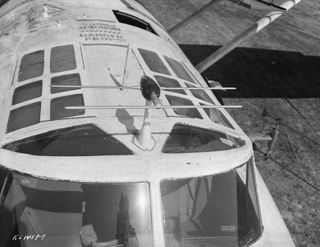 W
WRadar, Air-to-Surface Vessel, Mark II, or ASV Mk. II for short, was an airborne sea-surface search radar developed by the UK's Air Ministry immediately prior to the start of World War II. It was the first aircraft mounted radar of any sort to be used operationally. It was widely used by aircraft of the RAF Coastal Command, Fleet Air Arm and similar groups in the United States and Canada. A version was also developed for small ships, the Royal Navy's Type 286.
 W
WRadar, Air-to-Surface Vessel, Mark III, or ASV Mk. III for short, was a surface search radar system used by RAF Coastal Command during World War II. It was a slightly modified version of the H2S radar used by RAF Bomber Command, with minor changes to the antenna to make it more useful for the anti-submarine role. It was Coastal Command's primary radar from the spring of 1943 until the end of the war. Several improved versions were introduced, notably the ASV Mark VI, which replaced most Mk. IIIs from 1944 and ASV Mark VII radar, which saw only limited use until the post-war era.
 W
WThe Automatic Gun-Laying Turret (AGLT), also known as the Frazer-Nash FN121, was a radar-directed, rear gun turret fitted to some British bombers from 1944. AGLT incorporated both a low-power tail warning radar and fire-control system, which could detect approaching enemy fighters, aim and automatically trigger machine guns – in total darkness or cloud cover if necessary. The radar warning and fire-control system itself was commonly known by the code names Village Inn and "Z Equipment", as well as the serial number TR3548.
 W
WChain Home, or CH for short, was the codename for the ring of coastal Early Warning radar stations built by the Royal Air Force (RAF) before and during the Second World War to detect and track aircraft. Initially known as RDF, and given the official name Air Ministry Experimental Station Type 1 in 1940, the radar units themselves were also known as Chain Home for most of their life. Chain Home was the first early warning radar network in the world, and the first military radar system to reach operational status. Its effect on the outcome of the war made it one of the most powerful weapons of what is today known as the "Wizard War".
 W
WChain Home Low (CHL) was the name of a British early warning radar system operated by the RAF during World War II. The name refers to CHL's ability to detect aircraft flying at altitudes below the capabilities of the original Chain Home (CH) radars, where most CHL radars were co-located. CHL could reliably detect aircraft flying as low as 500 feet (150 m). The official name was AMES Type 2, referring to the Air Ministry Experimental Station at Bawdsey Manor where it was developed, but this name was almost never used in practice.
 W
WThe CXAM radar system was the first production radar system deployed on United States Navy ships, operating in the mid-high VHF frequency band of 200 MHz. It followed several earlier prototype systems, such as the NRL radar installed in April 1937 on the destroyer Leary; its successor, the XAF, installed in December 1938 on the battleship New York; and the first RCA-designed system, the CXZ, installed in December 1938 or January 1939 on the battleship Texas. Based on testing in January 1939, where the XAF was more reliable, the US Navy ordered RCA to build six XAF-based units for deployment and then shortly thereafter ordered 14 more.
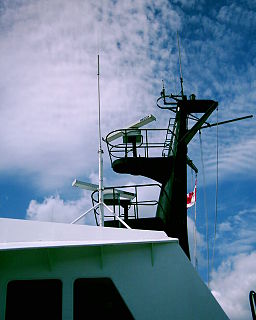 W
WThe Decca Radar company was a British manufacturer of radar systems. There were originally two divisions, Marine and Heavy Radar, with separate product lines. The later was sold to Plessy in 1965, and the term "Decca Radar" normally refers to the Marine division. That division remained with Decca until 1979 when it purchased by Racal to form Racal-Decca. After a series of further mergers and purchases, from 2000 the division is part of Northrop Grumman.
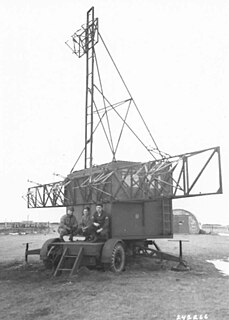 W
WGun Laying radar, Mark I, or GL Mk. I for short, was an early radar system developed by the British Army to provide range information to associated anti-aircraft artillery. There were two upgrades to the same basic system, GL/EF and GL Mk. II, both of which added the ability to accurately determine bearing and elevation.
 W
WRadar, Gun Laying, Mark III, or GL Mk. III for short, was a radar system used by the British Army to directly guide, or lay, anti-aircraft artillery (AA). The GL Mk. III was not a single radar, but a family of related designs that saw constant improvement during and after World War II. These were renamed shortly after their introduction in late 1942, becoming the Radar, AA, No. 3, and often paired with an early warning radar, the AA No. 4, which was also produced in several models.
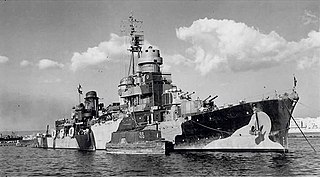 W
WThe Gufo radar was an Italian naval search radar developed during World War II by the Regio Istituto Elettrotecnico e delle Comunicazioni della Marina (RIEC). Also known as the EC-3 ter, its name is the Italian word for owl.
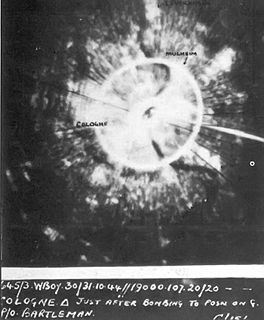 W
WH2S was the first airborne, ground scanning radar system. It was developed for the Royal Air Force's Bomber Command during World War II to identify targets on the ground for night and all-weather bombing. This allowed attacks outside the range of the various radio navigation aids like Gee or Oboe, which were limited to about 350 kilometres (220 mi). It was also widely used as a general navigation system, allowing landmarks to be identified at long range.
 W
WH2X, officially known as the AN/APS-15, was an American ground scanning radar system used for blind bombing during World War II. It was a development of the British H2S radar, the first ground mapping radar to be used in combat. It was also known as the "Mickey set" and "BTO" for "bombing through the overcast" radar.
 W
WMcDowell Grove Forest Preserve, located in Naperville, state of Illinois, is a 439-acre (178 ha) preserve on the West Branch of the DuPage River.
 W
WMonica was a range-only tail warning radar for bombers, introduced by the RAF in June 1942. Officially known as ARI 5664, it operated at frequencies of around 300 MHz. The system was also used by the US Army Air Forces, under the name AN/APS-13, and the nickname Archie.
 W
WThe Opana Radar Site is a National Historic Landmark and IEEE Milestone that commemorates the first operational use of radar by the United States in wartime, during the attack on Pearl Harbor. It is located off the Kamehameha Highway just inland from the north shore of Oahu, Hawaii, south of Kawela Bay. It is not open to the public.
 W
WThe SCR-268 was the United States Army's first radar system. Introduced in 1940, it was developed to provide accurate aiming information for antiaircraft artillery and was also used for gun laying systems and directing searchlights against aircraft. The radar was widely utilized by both Army and Marine Corps air defense and early warning units during World War II. By the end of World War II the system was already considered out of date, having been replaced by the much smaller and more accurate SCR-584 microwave-based system.
 W
WThe SCR-270 was one of the first operational early-warning radars. It was the U.S. Army's primary long-distance radar throughout World War II and was deployed around the world. Its also known as the Pearl Harbor Radar, since it was an SCR-270 set that detected the incoming raid about 45 minutes before the December 7, 1941, attack on Pearl Harbor commenced.
 W
WThe SCR-527 was a medium-range radar used by the United States for early warning and ground-controlled interception (GCI) during World War II.
 W
WThe SCR-584 was an automatic-tracking microwave radar developed by the MIT Radiation Laboratory during World War II. It was one of the most advanced ground-based radars of its era, and became one of the primary gun laying radars used worldwide well into the 1950s. A trailer-mounted mobile version was the SCR-784.
 W
WThe SCR-658 radar is a radio direction finding set introduced by the U. S. Army in 1944, was developed in conjunction with the SCR-268 radar. It was preceded by the SCR-258. Its primary purpose was to track weather balloons. Prior to this it was only possible to track weather balloons with a theodolite, causing difficulty with visual tracking in poor weather conditions. The set is small enough to be portable and carried in a Ben Hur trailer.
 W
WThe SCR-784 was a radar set used by the U.S. Army designed to be an amphibious version of the SCR-584, to control the fire of anti-aircraft batteries, and mounted on a searchlight trailer called a K-84. The set was used to guide the flare plane over the target.
 W
WSHORAN is an acronym for SHOrt RAnge Navigation, a type of electronic navigation and bombing system using a precision radar beacon. It was developed during World War II and the first stations were set up in Europe as the war was ending, and was operational with Martin B26 Marauders based in Corsica, and later based in Dijon and in B26's given to the South African Airforce in Italy. The first 10/10 zero visibility bombing was over Germany in March 1945. It saw its first combat use in the B-25, B-26 and B-29 bomber aircraft during the Korean War.
 W
WSJ radar was a type of S band (10-cm) radar set used on American submarines during the Second World War. The widespread use of the SJ radar, combined with the very low use of radar in the Imperial Japanese Navy gave great operational flexibility to the United States Navy's submarine campaign in the Pacific Ocean.
 W
WThe Type 271 was a surface search radar used by the Royal Navy and allies during World War II. The first widely used naval microwave-frequency system, it was equipped with an antenna small enough to allow it to be mounted on small ships like corvettes and frigates, while its improved resolution over earlier radars allowed it to pick up a surfaced U-boat at around 3 miles (4.8 km) and its periscope alone at 900 yards (820 m).
 W
WThe Type 277 was a surface search and secondary aircraft early warning radar used by the Royal Navy and allies during World War II and the post-war era. It was a major update of the earlier Type 271 radar, offering much more power, better signal processing, new displays, and new antennas with greatly improved performance and much simpler mounting requirements. It allowed a radar with performance formerly found only on cruisers and battleships to be fitted even to the smallest corvettes. It began to replace the 271 in 1943 and was widespread by the end of the year.
 W
WThe Type 281 radar was a British naval early-warning radar developed during World War II. It replaced the Type 79 as the Royal Navy's main early-warning radar during the war.
 W
WThe Type 291 radar was designed as a search radar for ships destroyer-sized and smaller in 1942. By the end of the Second World War it had been installed in almost every British and Commonwealth destroyer and escort ship as well as many submarines, naval trawlers, and motor torpedo boats. Some sets were furnished to the Soviet Union for their destroyers as a part of Lend-Lease.
 W
WThe Type 293 radar was designed as a short-range aerial-search radar for surface ships in 1945. It used the same transmitter as the Type 277 surface-search radar, but used a new antenna design intended to cover the area above the ship to provide air warning instead of surface search. The stabilised "cheese" antenna, 6 feet (1.8 m) diameter in the AUR antenna, was upgraded to 8 feet (2.4 m) in Type 293P and to 12 feet (3.7 m) in the postwar Type 293Q.
 W
WThe VT-158, also known as the Zahl tube, was a vacuum tube invented by American physicist Harold A. Zahl in the 1930s and used during World War II and the Korean War. It allowed the radar technology at the time to detect low-flying planes by generating enough power to produce ultrahigh frequency energy.